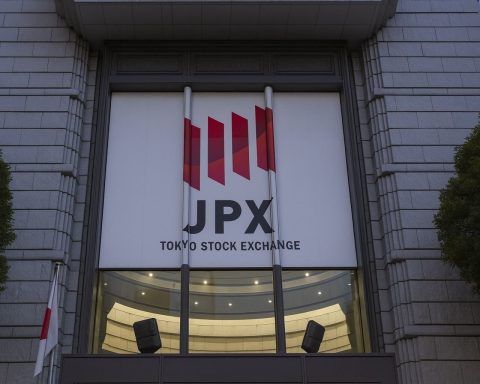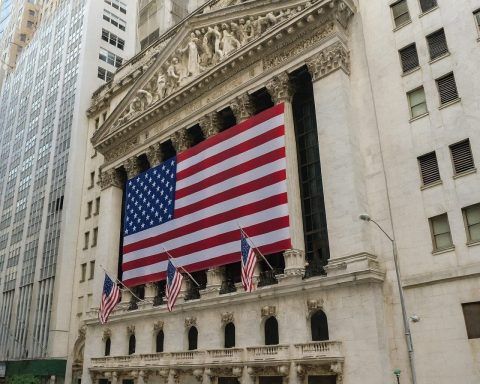- IMF Boosts 2025 Forecast: The IMF now sees Saudi GDP growing ~4% next year (up from 3%) [1], as oil production recovers and non-oil activity surges.
- Minister’s 5.1% Growth Call: Economy Minister Faisal Alibrahim told investors he expects roughly 5.1% real GDP growth in 2025 (with non-oil ~3.8%) [2], emphasizing “a long term restructuring” and diversifying away from oil toward productivity-driven growth [3].
- Historic Nobel Prize Win: Saudi citizen Prof. Omar M. Yaghi won the 2025 Nobel Prize in Chemistry (for designing metal-organic frameworks) [4]. KACST’s Dr. Munir Eldesouki hailed this as proof the Kingdom is becoming “a global hub for science, knowledge and innovation” [5] under Vision 2030.
- Tech & Innovation Drive: Saudi’s digital economy already equals ~15% of GDP (up 11% YoY in 2024) [6] and is set to add ~$90 billion by 2030 [7] [8]. The country boasts ~99% internet penetration [9] and surging broadband speeds (median ~109 Mbps in 2024) [10] thanks to aggressive fiber and 5G expansion.
- Markets Steady: The Tadawul All Share Index sits near 11,600 points (roughly flat vs. recent highs [11]), and Saudi Aramco shares trade around SAR 25.9 (near its 52-week range high) [12], reflecting investor confidence in the oil giant.
IMF Forecast and Growth Outlook
Saudi Arabia’s outlook brightened this week after the IMF lifted its 2025 GDP forecast to 4.0% [13]. Reuters notes this upgrade is driven by faster-than-expected unwinding of OPEC+ oil cuts and rebounding output [14]. IMF Middle East director Jihad Azour has warned that oil price recoveries significantly improve the Kingdom’s finances – each additional 1 million barrels/day adds ~3.2% of GDP to the fiscal balance [15]. In practical terms, breakeven oil prices remain high (around $94/bbl excluding extra spending) [16], so the recent rise of Brent back toward ~$70 supports the budget.
Finance Minister Mohammed Al-Jadaan, in an IMF Article IV statement, noted Saudi’s resilience: diversification efforts and large reserves mean even with oil cuts Saudi can fund mega-projects [17]. Non-oil GDP rose ~4.6% in H1 2025, contributing over 55% of growth [18]. Yet lower oil revenues have already widened deficits and forced delays on some Vision 2030 projects [19]. The IMF report stressed that while higher output is lifting GDP, the drop in oil prices “has led to a decrease in revenue and widening fiscal deficits, as well as a scaling back of some projects” [20]. In short, analysts say Saudi’s fiscal trajectory will hinge on sustaining higher oil output and prices while the non-oil engine accelerates.
Vision 2030 and Diversification Gains
Crown Prince Mohammed bin Salman’s Vision 2030 economic plan remains the north star. The plan shifts spending into tourism, entertainment, mining and high-tech. Saudi officials – including Minister Alibrahim – emphasize a “long term restructuring journey” to reduce oil dependence [21]. As Alibrahim told the FII conference: “We forecast…5.1%… growth, supported by the non-oil sector,” but warned “we are on a long term restructuring journey… diversifying our economy away from… relying on oil, to become a more resilient economy” [22].
Government forecasts (Ministry of Finance) see 4.4% growth in 2025 (rising to 4.6% in 2026) driven by non-oil sectors. The plan has already yielded results: non-oil GDP expanded ~4.8% in H1 2025 versus overall 3.6% [23], and private sector growth has been robust. Vision 2030 still underpins the outlook. As Fitch Ratings and other analysts have noted, average non-oil growth could stay in the 4–5% range over coming years thanks to mega-projects and reforms [24]. However, low oil (and emerging higher debt issuance by sovereign/PIF) suggest fiscal consolidation remains on the table [25] [26]. In sum, experts forecast solid expansion – Alibrahim’s 5.1% target and the IMF’s 4% call – if oil markets hold steady and reforms continue.
Innovation, Tech and Educational Achievements
Saudi Arabia is also showcasing non-oil wins. This month Professor Omar M. Yaghi – a world-renowned chemist with Saudi citizenship – was awarded the 2025 Nobel Prize in Chemistry [27]. He became the first Saudi Nobel laureate, recognized for pioneering “metal-organic frameworks” used in water harvesting and carbon capture. KACST President Dr. Munir Eldesouki said Yaghi’s award “reflects the wise leadership’s vision of making the Kingdom a global hub for science, knowledge, and innovation” [28]. Dr. Eldesouki noted this success came from Vision 2030’s focus on talent and R&D investment. (Yaghi himself directs the KACST–UC Berkeley nanomaterials center.)
Beyond science, Saudi is pouring resources into digital infrastructure and education. The digital economy already represents 15% of GDP, growing ~11% in 2024 [29]. The government values the ICT sector at SR 495 billion today (≈$132 billion) and aims to add another ~$90 billion by 2030 [30]. Key initiatives include massive 5G rollout (aiming to cover 80% of populated areas, with satellite backhaul for remote sites [31]) and data-center expansion (capacity up 42% YoY). The ST Engineering iDirect–stc satellite deal exemplifies this push: Don Claussen, CEO of ST Engineering iDirect, hailed the partnership as proof of a shared vision to deliver “advanced connectivity solutions that empower digital transformation across the Kingdom” [32].
On the consumer side, nearly everyone is online – Saudi penetration is ~98–99% [33]. City dwellers typically enjoy fiber speeds of hundreds of Mbps (median ~109 Mbps nationwide by early 2024 [34]). Fierce competition has triggered a “fiber speed war” (stc, Mobily, Zain offering 300–1000 Mbps plans cheaply [35]). The result: ultra-fast broadband is widely available even as prices remain moderate. These developments bolster startup ecosystems, tech clusters (like NEOM’s innovation center), and education (e.g. new STEM universities and scholarships, though details lie beyond today’s news).
Market Reaction and Outlook
Financial markets have absorbed these signals calmly. The Saudi Tadawul All Share Index stands near 11,600 points (close to its recent high of 11,619.82 set on Oct 27) [36], reflecting steady confidence. Trading volumes remain healthy. Major stock winners have included tech and service companies (e.g. Rasan IT surged on earnings) and even cyclical names like petrochemical Saudi Kayan despite mixed reports [37].
Saudi Aramco’s stock – the linchpin of the market – is trading around SAR 25.9 [38]. It shows resilience as global refineries recover, though it remains well below its all-time highs (~SAR 32.8 in late 2023) due to cautious oil outlooks. Aramco’s forward guidance hinges on continuing oil production growth (it recently boosted output to ~10 Mbpd) and dividend policy. Analysts note Aramco’s 1.8% dividend yield is attractive, and the company benefits from higher oil volumes.
Looking ahead, forecasts remain upbeat but cautious. A sustained oil-price rally (say $80–90/barrel) could produce dual surpluses and allow faster fiscal consolidation, per IMF Azour [39]. Conversely, if oil sinks back into the $50–60 range, deficits could widen and force further spending cuts or borrowing. Non-oil activity (tourism, mining, defense contracts, etc.) provides a buffer – but as Azour warned, the fiscal trajectory “will still depend very much on the oil price outlook” [40].
Bottom line: Saudi Arabia enters late 2025 at a crossroads of optimism. IMF and local forecasts point to roughly 4–5% growth next year, powered by record oil output and booming non-oil sectors [41] [42]. High-profile success stories – from Nobel science to digital deals – give credibility to the diversification push. Investors and analysts remain watchful: if global markets hold and Vision 2030 projects gain momentum, the Kingdom’s economic transformation may indeed prove sustainable. Sources from the IMF, Reuters and regional press underline both the promise (growth, innovation) and the risks (oil dependence, budget deficits) shaping Saudi Arabia’s near-term outlook [43] [44] [45].
Sources: Major news wires and reports (IMF and ministerial statements [46] [47]), Bloomberg/Worldoil oil-market analysis [48] [49], local press on Nobel laureate and markets [50] [51], and tech/industry analysis by TS2 TechStock (coverage of satellite, broadband and digital-economy initiatives) [52] [53] [54]. These are complemented by official statements and expert commentary.
References
1. www.reuters.com, 2. thefinancialexpress.com.bd, 3. thefinancialexpress.com.bd, 4. english.aawsat.com, 5. english.aawsat.com, 6. ts2.tech, 7. ts2.tech, 8. ts2.tech, 9. ts2.tech, 10. ts2.tech, 11. www.arabnews.com, 12. www.investing.com, 13. www.reuters.com, 14. www.reuters.com, 15. www.worldoil.com, 16. www.worldoil.com, 17. www.worldoil.com, 18. www.reuters.com, 19. www.reuters.com, 20. www.reuters.com, 21. thefinancialexpress.com.bd, 22. thefinancialexpress.com.bd, 23. www.reuters.com, 24. www.arabnews.com, 25. www.worldoil.com, 26. www.reuters.com, 27. english.aawsat.com, 28. english.aawsat.com, 29. ts2.tech, 30. ts2.tech, 31. ts2.tech, 32. ts2.tech, 33. ts2.tech, 34. ts2.tech, 35. ts2.tech, 36. www.arabnews.com, 37. www.arabnews.com, 38. www.investing.com, 39. www.worldoil.com, 40. www.worldoil.com, 41. thefinancialexpress.com.bd, 42. www.reuters.com, 43. thefinancialexpress.com.bd, 44. www.reuters.com, 45. ts2.tech, 46. www.reuters.com, 47. thefinancialexpress.com.bd, 48. www.worldoil.com, 49. www.worldoil.com, 50. english.aawsat.com, 51. www.arabnews.com, 52. ts2.tech, 53. ts2.tech, 54. ts2.tech










